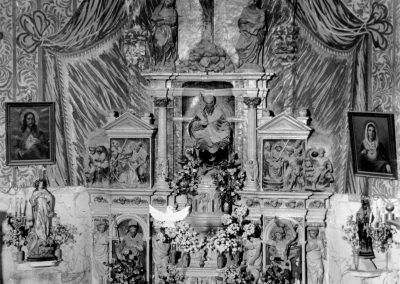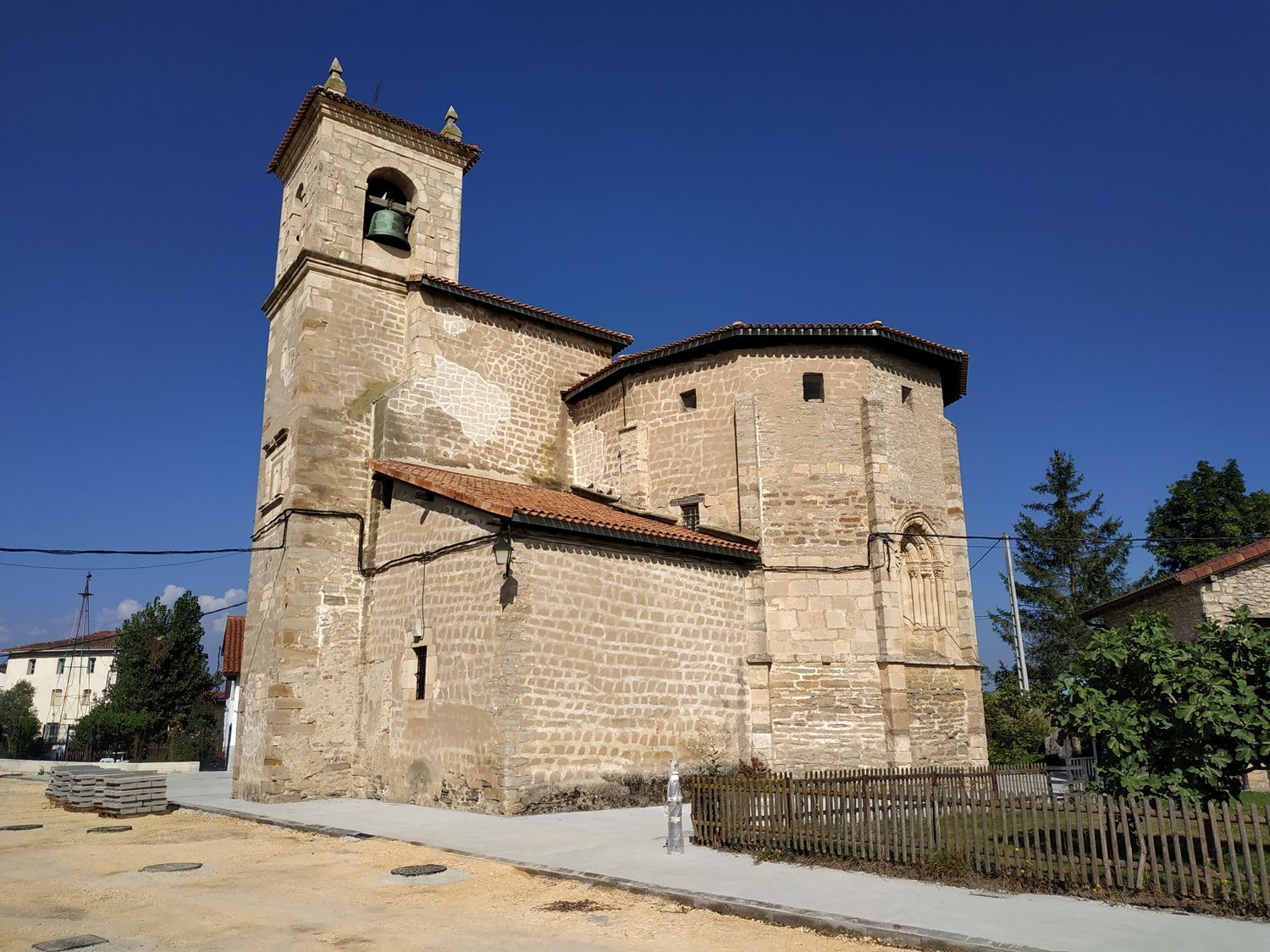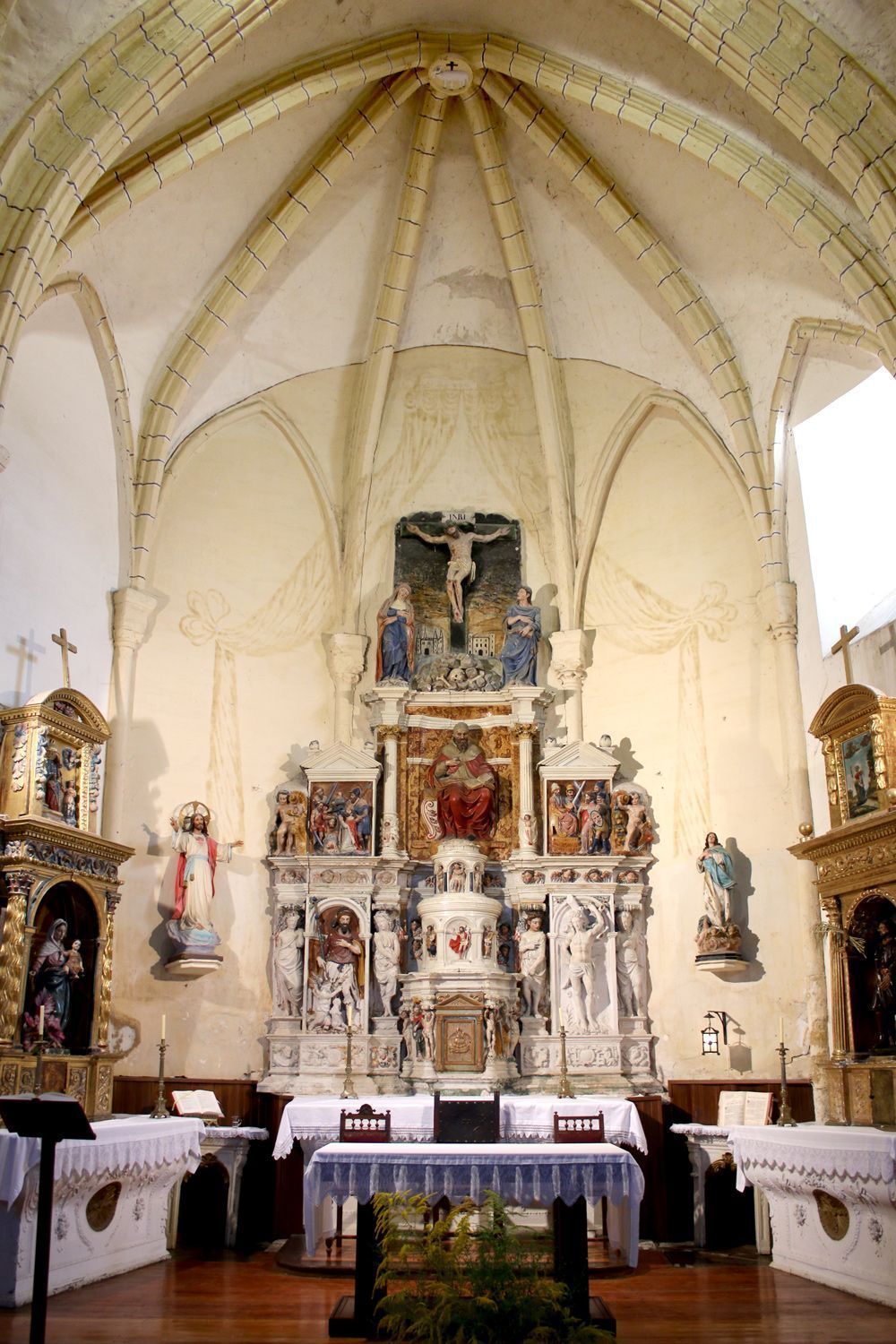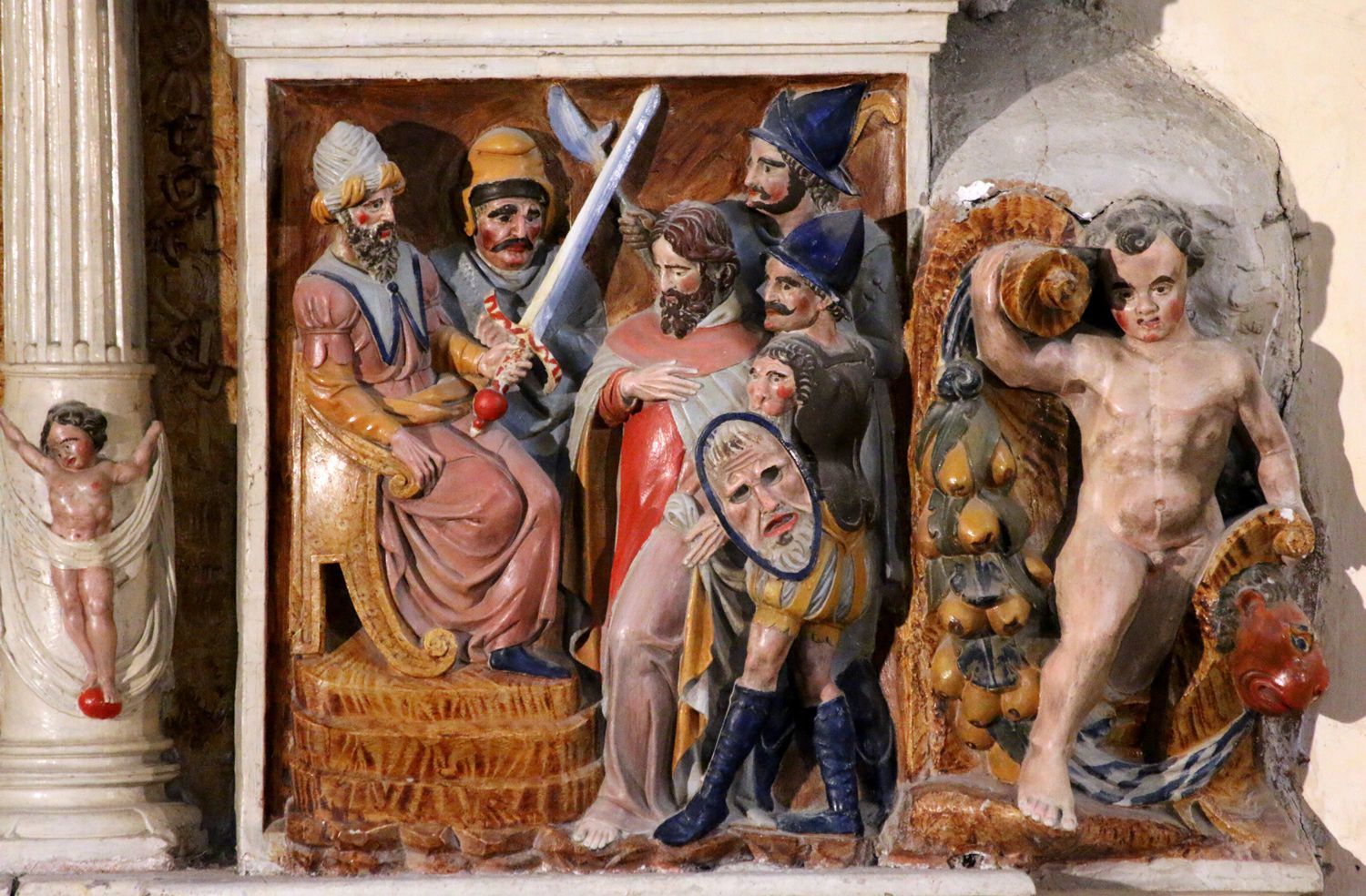
A digital gate open to heritage

The church of Saint Romanus – Ezkerekotxa
Ezkerekotxa is a village located in the heart of the Alavese Plains and crossed by the Camino de Santiago. In the church of Saint Romanus we find a good summary of all the different historical periods that the population has gone through. The first news we have of the existence of Ezkerekotxa dates from 1040, although the first historical remains that we find on its church should be placed around the 12th century. Towards the end of the 13th century, it reached a great splendour that was reflected on the growth of the church by the apse side. During the Renaissance the magnificent stone altarpiece that is so characteristic of this temple was included. In the last centuries, the sacristy, the portico or the parish house were added, which form the complex set of spaces of the parish church.Introduction
The medieval credence
Before the sacristies existed, which started to be strongly introduced from the late 15th century and the early 16th century, all the necessary elements to celebrate the liturgical rites were stored in cabinets. These cabinets, named credences, used to be found in the presbytery, close to the officiant. These credences were often a simple hole in the wall of rather small dimensions, but many of these ornamented medieval niches are preserved. In those cases, two arches were usually made, connected by a central column that separated two holes in which the bread, the wine, the oils or the liturgical books could be left. These arches could receive sculptural or pictorial decoration, or both, as in the case of Ezkerekotxa. The credence that we see in the church of Saint Romanus has the two characteristic arches and, above them, there is a pointed discharging arch with leaves that frames a female face with a veil, in which we can still perceive remains of the original polychromy.
The facade Located in the middle of Ezkerekotxa village and next to the Camino de Santiago in Álava, the church of Saint Romanus has been a silent witness of the passing of people and artistic fashions, which have left a deep mark among its walls. We can locate the first phase of this parish church in the origins of the Romanesque art in Álava due to its mysterious facade, unique among other models of the surroundings. Under the archivolt with a Jaca-style checkered design and a series of plain arches, we can perceive some capitals damaged by the passing of time that reveal some very interesting motifs, such as leaves with a band of pearls, an angel or the figure of a worshipper with raised arms that seems to be wearing a tunic with geometric motifs.The church
The tabernacle is conceived as a circular small temple with several floors, showing the knowledge of the Italian architecture of the moment. We can see several figures around, such as Adam and Eve, Saint Peter and Saint Paul or the Resurrected Christ.
At the top, a calvary with the Crucified, the Virgin and Saint John crown this impressive altarpiece whose authorship and principal are unknown to date.
Créditos fotográficos:
De las fotografías actuales: © Alava Medieval / Erdi Aroko Araba
De las fotografías antiguas: Archivo del Territorio Histórico de Álava.

























